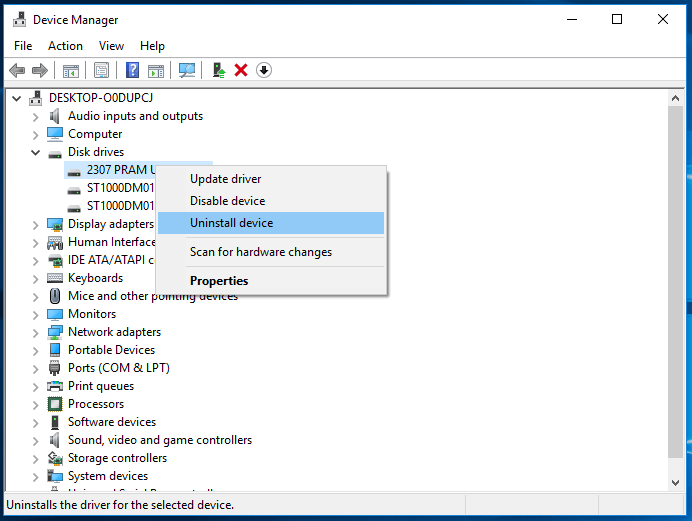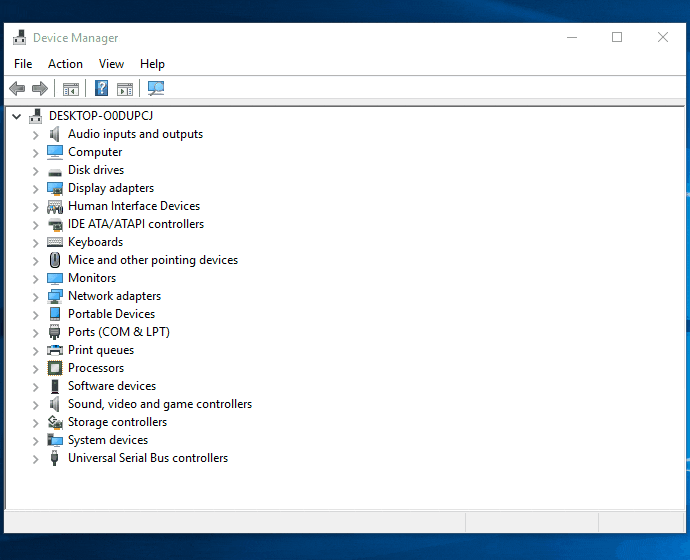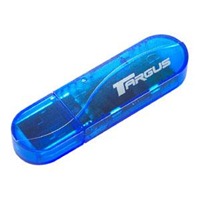USB BitScopes require the installation of a driver when first used with Windows.
This usually happens automatically when you first connect your BitScope.
However you may need to install the driver manually if:
- Your PC is not connected to the Internet,
- You are using Windows XP or Vista (not recommended!),
- You are using Windows 7 Starter or Home Edition,
- The automated windows installer fails for some other reason.
You may then need to configure the software to use the correct COM Port.
Network Connect Usb Devices Driver Download For Windows 7
Go to the official site of the manufacturer Type the name and model of your device in the search box. Select your device and click the Support tab/button. You will get the download link for the specific USB Drivers for your device. Method 6: Installing Generic USB Hub Driver. Installing the Generic USB Hub Driver might work for you especially if you are seeing an Unknown Device in the Device Manager. Hold Windows key and press R; Type devmgmt.msc and press Enter; Expand the Universal Serial Bus Controller by double clicking it. Windows Apps for Network Drivers. Realtek RTL8187B Wireless 802.11b/g 54Mbps USB 2.0 Network Adapter. Intel (R) PRO/100 VE Network Connection Driver Version A02. Intel Android device USB driver 1.10.0 on 32-bit and 64-bit PCs This download is licensed as freeware for the Windows (32-bit and 64-bit) operating system on a laptop or desktop PC from drivers without restrictions. Intel Android device USB driver 1.10.0 is available to all software users as a free download for Windows.
To optimize performance in Windows we recommend reducing the driver latency.
For more information about all this, read below or click through these links:
- Automatic Driver Installation which is the usual case for most people.
- Manual Driver Installation if automatic installation did not work for you!
- Which COM Port was assigned by Windows when you installed the driver?
- Choose the correct COM Port if it's not already automatically selected.
- Use Windows Device Manager if Windows prevents you accessing devices.
- Reduce Driver Device Latency to improve your BitScope performance.
- Troubleshooting USB if your BitScope still cannot not connect to your PC.
Of course, email us anytime at support@bitscope.com if you need assistance!
In most cases, there is nothing to do, just plug in the BitScope.
The following pop-up should appear at the bottom right of the desktop.
Its appearance may differ a little depending on the edition and version of Windows 7 or 8 you are using (The remainder of this tutorial uses Windows 7) To observe progress click the pop-up dialog to reveal:
When the installation completes you will see:
Take note of the COM Port identifier (COM3 in this example) as you may need it later.
If the automatic installer failed you may see this:
In this case you will need to UNPLUG YOUR BITSCOPE and download the driver:
and when complete, run it:
You will be asked to extract it:
and then install it:
which may take some time to complete:
When the installation is complete you may see this dialog:
Take note of the COM Port identifier (COM3 in this example) as you may need it later.
Sometimes it's necessary to learn the device properties for a USB BitScope.
The most common reason is to see the COM Port number Windows has assigned when the driver was installed (if you forgot to take note of it at the time).
Select Devices and Printers:
Find the BitScope (it should be listed) and select properties:
and then select the Hardware Tab:

Here you can see the COM Port number (COM3 in this example).
If only one USB BitScope is connected choosing the COM Port is unecessary

All BitScope Applicationsautomatically connect with that one BitScope.
However, if more than one BitScope is connected or there are other FTDI COM Port devices connected to your PC (e.g. a serial mouse), you may need to configure the software to use the correct COM Port.
This can be done with most BitScope Apps. With DSO click SETUP:
and choose the correct COM Port (COM3 in this example) and Click OK:
Doing this with one BitScope Application sets the port used for all applications so you won't need to do this again.
In the case of DSO, click POWER to start the application:
Note that COM3 is reported at the bottom of the application. If the selected COM Port does not appear here, you are not connected to your BitScope (troubleshooting).
Windows may throw up a roadblock when trying to view the COM port or adjust the device properties when accessed the more direct way.
In this case you may need to use Device Manager to access the device properties.
First select the Computer Properties:
and then choose the Device Manager:
From the Device Manager, find the USB Serial Port:
(which is COM3 in this example) and right-click to open the device properties:
BitScope prefers the shortest USB latency to achieve the highest performance.
Unfortunately Windows 7 & 8 install the driver with a long latency by default.
Reduce the latency value to significantly improve performance when talking to a USB BitScope with Windows 7 or 8.
After installing the USB driver, select the device properties and then choose the properties for the COM port assigned to your BitScope (COM3 in this example):
Select the Port Settings tab and click Advanced:
At this point you may be told:
If so, you will need to access the Port Settings tab via the Device Manager instead (this is due to a bug in many editions of Windows 7 and 8).
Whether you've used Device Manager or this route you should then see:
Change the default latency (16 ms) to 1 ms:
Click OK to accept the new value.
You may then need to restart Windows for the new value to take effect.
If you have successfully installed the driver but still you cannot connect:
- Be sure to download and use the latest versions of BitScope Software.
- Temporarily disconnect any other USB Serial devices from your PC.
- Check which COM port Windows assigned when you installed the driver.
- Be sure to chose the same COM portvia the BitScope Software setup dialog.
- Check your BitScope is powered on (the red LED on the back should be lit).
- Confirm your power supply is good (for externally powered BitScope models).
- Try connecting directly your PC's USB port if you're using a USB Hub.
- Connect via a different USB port possibly using a different USB cable.
- Try a different PC and/or other software to rule out PC based problems.
If you can connect but there are still problems:
- If BitScope DSO reports OFFLINEcheck the selected COM port is correct.
- If BitScope DSO reports SYDNEYcheck the selected COM port is correct.
- If your BitScope seems to be slow to respond reduce the driver latency.
- If it's slow to connect make sure the correct COM port is listed first.
If you still have problems, especially if you are upgrading from older software versions, the configuration files used by the application software may have been corrupted.
The file most likely to cause problems (if corrupt) is the probe file.
The Local Probe File (details)
On Windows 7 & 8 the local probe file is located at:
or on older versions of Windows:
where <user> is your logged in user name on your PC.
Delete this file to force the software to recreate it with correct information.
The Global Probe File (details)
There is another globally configurable probe file. This is unlikely to be corrupt but if you suspect it is, and you have adminstrator privileges on your PC to modify it, you can delete (or comment out) its contents (don't delete the file itself). It is highly unlikely you will need to do this but we mention it here as a last resort.
None of this works for you? Email us at support@bitscope.com for assistance!
Huawei USB drivers is an important of all Huawei smartphones & tablets you can easily connect your device to a computer or laptop to sharing files & communicate between each other, when you installing Huawei USB drivers you will be able to update your Huawei to latest Android OS, and you can easily browse the file system on your Huawei & transfer your photos, videos messages contact… you can also take a back up to all your important data & you can restore it if you lost it.
It’s hard to connect a Huawei mobile with a computer without USB driver, but here you can download Huawei USB drivers & connect your Huawei with computer successfully.
Read Also: How to Flash Huawei P20 Stock Firmware – All Firmware
Notice: Huawei USB drivers compatible with Windows 7, Windows 8, Windows 10.
Download & Install Huawei USB Drivers:
- Download Huawei USB Driver: USB Driver
- Download Huawei ADB Driver: ADB Driver
- Download Huawei CDC Driver: CDC Driver
- Download Huawei VCOM Driver: VCOM Driver
- Download Huawei Qualcomm Driver: Qualcomm Driver

How to Install Huawei ADB Driver
1- Open Device Manager in your PC Then Click on Action and choose to add the legacy hardware
2- Click Next & choose to Install the hardware that I manually select from the list (Advanced) then Click on Next
3- Tap on Show all devices, click on Next & click on Have disk
4- Select Browse Choose The Huawei USB driver file you downloaded and click OK
5- Choose the Android ADB interface and click on Next
6- The Huawei USB driver installation starts, click on Next, then click on Finish
How to Install Huawei Qualcomm USB Driver
Network Connect Usb Devices Driver Download For Windows 10
1- Open Qualcomm USB Driver Setup File.exe
2- choose WWAN DHCP is not used to get IPAddress And Click Next
Network Connect USB Devices Driver Download For Windows
3- Then, Select Next
4- Choose I accept the terms in the license agreement and click Next
5- Click on Install To Begin The Installation
6- Click Finish.
How to Install Huawei CDC Driver
1- From the control panel launch Device Manager
2- Click on Action. & Choose Add Legacy Hardware. then click Next
3- Choose to install the hardware manually from a list and click Next.
4- Choose “Show all devices” and click Next.

5- A window will open up. Use it to select the CDC driver folder you downloaded and click Ok.
6- Click “Next” to start the hardware installation process.
7- Wait until the installation process to get finished, you will see the Completing the Add Hardware Wizard. Click Finish.
How to Install Huawei VCOM Driver
- Open Device Manager
- Right-click with the mouse on your username and select Add Legacy hardware. then click on the Next button
- Select option Install the hardware that I manually select from a list (Advanced) and click on Next button.
- Tab on Show All Devices and click Next
- Click on Have Disk and select .inf you downloaded & click on Next
- That’s it, Your Huawei VCOM Driver are successfully installed.
That’s it, Your Huawei VCOM USB Driver is successfully installed.
